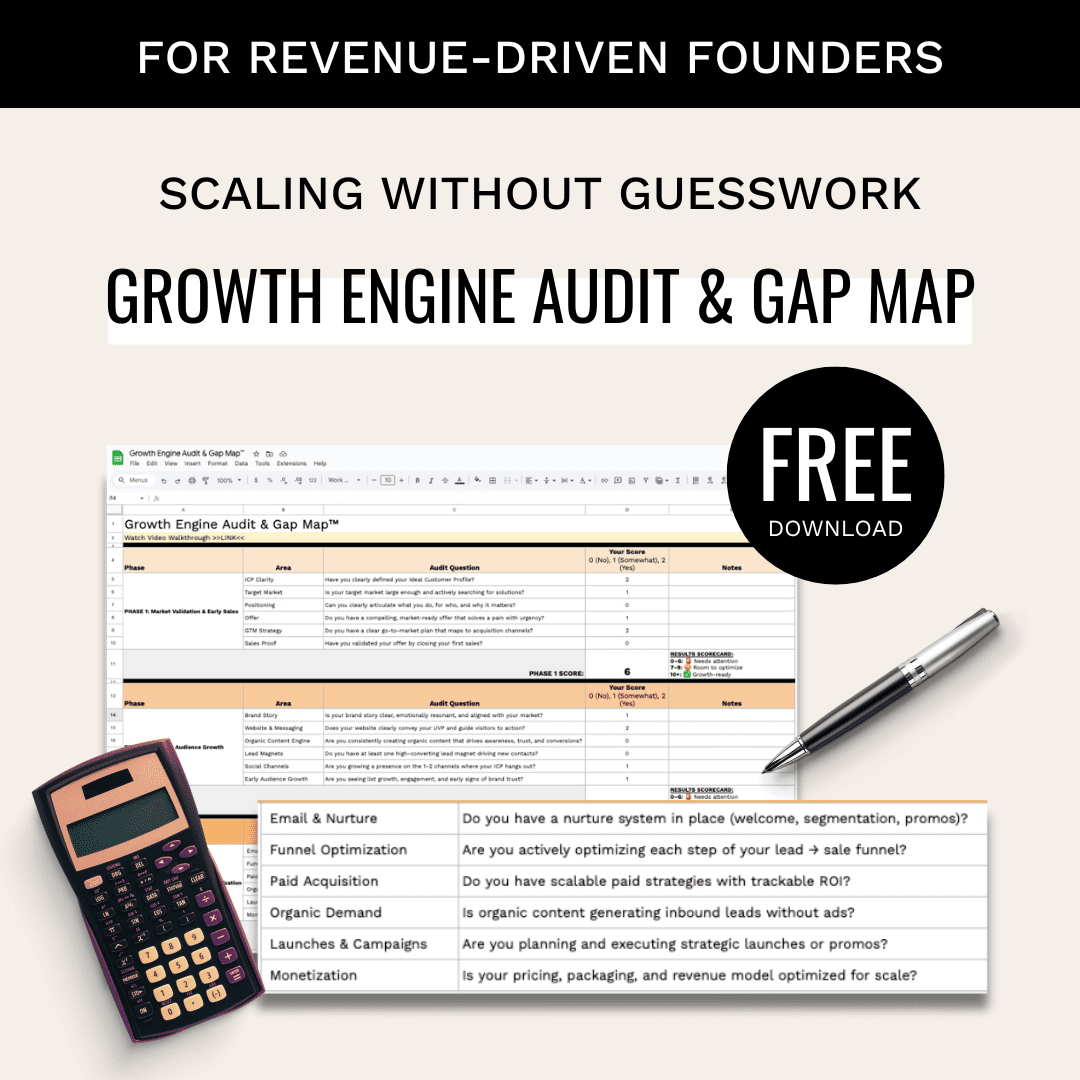Did you know 42% of startups fail because their product doesn’t meet real demand? This is one of the biggest reasons most tech startups fail before they even get off the ground. The problem? A mismatch between what the audience needs and what the product offers.
Here’s the quick takeaway:
- 90% of startups fail, and 95% of new products don’t survive their first year.
- The biggest issue: Poor product-market fit.
- Key causes of failure: Misunderstanding the audience, ignoring their pain points, and failing to validate the product idea.
How to Fix It:
- Understand Your Audience: Study their behavior, pain points, and motivations.
- Test Your Product: Use a Minimum Viable Product (MVP) to validate demand.
- Adjust Pricing and Features: Use feedback to refine your offering.
- Track Metrics: Monitor retention, engagement, and conversion rates.
Startups that align their product with audience needs see 36% higher retention rates and up to 208% more revenue growth. The key is to validate your idea early, listen to your audience, and adapt quickly.
Achieving Product-Market Fit: The Key to Startup Success
Audience and Offer Basics
Getting the connection right between your target audience and your product offer can make or break your startup. With 42% of startups failing due to poor product-market fit, understanding this relationship isn’t just important – it’s essential.
Target Audience Analysis
Knowing your audience goes beyond surface-level demographics. It’s about pinpointing the people who are most likely to pay for your solution. In fact, 68% of consumers now expect personalized experiences, so getting this right is more important than ever.
To dig deep into your target audience, focus on these three areas:
- Demographics and Behavior
Dive into who your customers are and how they behave. Companies that make data-driven decisions in this area have seen revenue increases of up to 760%. - Pain Points and Motivations
What drives your audience? What frustrates them? For example, HelloFresh nailed this by recognizing that young consumers wanted affordable food options while learning to cook. They reached this audience through platforms like YouTube and streaming services, speaking directly to their needs. - Market Position
Understand how your audience perceives value. Take McDonald’s during the 2008 financial crisis – they leaned into their Dollar Menu, addressing customers’ heightened price sensitivity at the time.
This kind of insight lays the groundwork for creating a product that truly resonates with your audience.
Building the Right Product
Once you’ve nailed down who your audience is, the next step is creating a product that speaks to them. But here’s the reality: 95% of new products fail within their first year. To avoid becoming part of that statistic, you need to test and validate your ideas rigorously.
Here’s a breakdown of the key elements to test when developing your product:
| Component | Purpose | Key Consideration |
|---|---|---|
| Value Testing | Checks if customers will pay for your solution | Solve one critical problem effectively |
| Feature Alignment | Ensures features match customer needs | Prioritize features based on feedback |
| Price Testing | Finds the ideal pricing strategy | Test different price points with segments |
| Growth Validation | Confirms sustainable customer acquisition | Keep an eye on acquisition costs |
Customer-focused companies are 60% more profitable than those that aren’t. GymShark is a perfect example – they built their success by collaborating with athletic influencers who had a deep understanding of their audience’s needs.
To create a product that hits the mark:
- Start with a Minimum Viable Product (MVP) that addresses core needs.
- Use analytics to track performance.
- Collect ongoing feedback from your audience.
- Iterate and improve based on what you learn.
Achieving product-market fit is an ongoing process. As Harvard Business School Professor Sunil Gupta puts it, “While you can try and market a product to everyone, consumers have different needs and preferences. What appeals to one group of consumers may not appeal to another group”. Constant adaptation is the name of the game.
Problems When Audience and Offer Don’t Match
Did you know that a mismatch between a product and its intended audience is responsible for 70% of startup failures within a decade?. Let’s dig into how this misalignment leads to soaring marketing expenses, customer churn, and shaken investor confidence.
Higher Marketing Costs
When a product doesn’t align with its target audience, marketing becomes an uphill battle. Expenses skyrocket, and returns plummet. Companies that invest in detailed audience analysis report up to 72% higher engagement rates. On the flip side, 70.6% of consumers stop supporting brands that clash with their personal values. Using real-time data to zero in on the right audience can improve marketing ROI by 34%. The takeaway? Misalignment doesn’t just hurt – it’s expensive.
Customer Churn and Retention Loss
Misalignment doesn’t only affect budgets; it also drives customers away. Companies with a strong alignment between their product and audience enjoy 36% higher customer retention rates. But when that connection is missing, the fallout is hard to ignore:
- 79% of marketing leads never convert.
- Misalignment can lead to a 10% annual revenue drop.
- Inconsistent messaging frustrates customers, damaging satisfaction and loyalty.
"For most firms, the largest, most difficult, and most expensive part of strategy implementation is aligning sales and go-to-market efforts with the company’s espoused strategies and goals."
- Frank V. Cespedes, Senior Lecturer at Harvard Business School
Loss of Investor Trust
Investors lose confidence quickly when a company struggles with misalignment. The numbers speak for themselves:
- Revenue Growth: Aligned organizations report 32% year-over-year revenue growth, while misaligned competitors see a 7% decline.
- Market Position: Companies with poor alignment often fail to hold their ground in competitive markets.
- Overall Performance: Key metrics like profitability and customer acquisition consistently fall below industry benchmarks.
"You’ll be 90% wrong about your assumptions. The problem is that you don’t know which 90%. Therefore, do everything you can to challenge your convictions, and be willing to shed them or tweak them as needed."
- Nir Zicherman
Even something as seemingly minor as a logo redesign can spark backlash, shaking both customer trust and investor confidence. Clearly, the stakes of misalignment are too high to ignore.
sbb-itb-e8c8399
Finding Audience-Offer Fit Problems
Catching issues with how your offer aligns with your audience early on can save massive amounts of time and money. Research indicates that 60% of marketing budgets go toward campaigns that fail to connect with their target audience. Below are some effective ways to spot these problems before they escalate.
Testing Your Value Claims
To ensure your value proposition resonates, you need to validate it through structured testing. Peter Reinhardt, Former CEO of Segment, famously noted that 20 hours of insightful interviews could have prevented 18 months of wasted effort on building features no one needed.
Here’s how successful businesses test their value claims:
- Define Your Core Hypothesis
Clearly outline the problem your product solves and the measurable outcomes you aim to achieve. For example:
Component Test Measure Desirability Do customers want this? User interviews, pre-orders Feasibility Can we build it? Technical prototypes, MVPs Viability Can it make money? Customer acquisition costs, lifetime value - Design Targeted Experiments
Focus on testing one critical assumption at a time. For instance, Intercom validated their customer-first approach by gauging early adopter interest back in 2011, which helped them secure seed funding. - Validate Through Action
Actions speak louder than words. Instead of relying on opinions, measure actual behavior. Buffer, for example, demonstrated its value through measurable month-over-month growth and early user testimonials, which became key elements in their pitch deck.
Once you’ve tested your claims, the next step is analyzing how customers truly respond.
Measuring Customer Response
Understanding how your audience reacts involves combining both numbers and stories – quantitative data and qualitative insights.
Engagement Metrics to Track:
- Activation rates
- Product usage trends
- Conversion funnel performance
- Churn rates
A great example of this is Mailchimp‘s collaboration with Spotify in March 2023. By implementing Mailchimp‘s Email Verification API, Spotify achieved big results: their email bounce rate dropped from 12.3% to 2.1% in just 60 days. This improvement led to a 34% boost in email deliverability and an impressive $2.3 million in added revenue.
"The best content marketing offers great advice to address goals, opportunities and challenges of prospective ideal clients. People don’t care what brand name or logo is on the advice. They care about the quality of the advice. Great advice builds trust for whoever is associated with it."
- Randy Shattuck, The Shattuck Group
Key Response Indicators to Monitor:
| Signal Type | Metrics | Why It Matters |
|---|---|---|
| Direct Feedback | Customer interviews, support tickets | Highlights immediate pain points |
| Behavioral Data | Usage patterns, feature adoption | Shows how much value users actually get |
| Market Response | Conversion rates, sales velocity | Reflects whether the product fits the market |
Here’s a compelling stat: 75% of consumers are willing to spend more with brands that get the customer experience right. That’s why it’s crucial to continuously monitor these signals and act fast on the insights. Top-performing startups often have feedback systems that trigger immediate updates or strategy discussions.
Fixing Audience-Offer Alignment
Once you’ve pinpointed where your startup’s audience and offering are out of sync, it’s time to take action. Many startups face challenges in achieving the right market fit, but there are practical ways to bridge the gap. These include refining your market positioning and enhancing your product to better meet customer expectations.
Market Position Adjustments
Getting your market positioning right starts with understanding where you currently stand and where you need to go. This process hinges on a deep understanding of your audience, as previously discussed.
"When a company has weak positioning, they don’t really know who they’re for. That’s when salespeople start bending the truth to close deals, and customers churn because the product isn’t what they expected."
To reposition effectively, focus on these key elements:
| Positioning Element | Assessment Questions | Action Steps |
|---|---|---|
| Value Clarity | What unique problem do we solve? | Map customer pain points to specific features |
| Market Fit | Who benefits most from our solution? | Segment users by their needs and use cases |
| Competitive Edge | What makes us stand out? | Identify gaps in competitor offerings and highlight your strengths |
Take Toast‘s journey as an example. Their tailored approach to the point-of-sale market shows how specialized positioning can lead to success. Once your positioning is clear, it’s time to ensure your product delivers on those expectations.
Product Improvements
Your product should evolve based on genuine customer needs. Focus on these areas to make meaningful adjustments:
- Feature Prioritization
Studies suggest that 80% of users only utilize about 20% of a product’s features. Concentrate on building and refining the features that address your audience’s biggest challenges. - User Experience Enhancements
A seamless user experience can make all the difference. Here are some ways to improve it:- Simplify onboarding to get users up and running quickly.
- Optimize navigation and interface design for intuitive use.
- Provide contextual help and clear documentation.
- Leverage AI-powered tools for smarter support.
- Value-Based Pricing
Adjust your pricing model to better reflect the value your customers perceive in your product.
"Category positioning only works when you use a category that’s real. Like Docusign saying they’re an ‘e-signature company.’ Everyone knows exactly what that is… ‘use case’ positioning focuses on an activity your product helps with. Calendly avoided the category question entirely and framed their positioning around a use case: ‘Easily schedule meetings without the back-and-forth emails.’"
Stay adaptable, but always anchor your changes to your core value proposition. Regularly collect feedback through customer interviews, analytics, support tickets, and feature usage data. Every update should align with what your audience truly needs.
Conclusion
For tech startups, success often hinges on how well their offerings align with their audience’s needs. A striking 34% of startups fail due to misalignment. Christina Cacioppo, CEO and co-founder of Vanta, puts it plainly:
"Do all the product development best practices [market research, user interviews, validating mockups, starting with a lightweight MVP to test the core problem]. Nobody wants to do them because they seem tedious, they’re less fulfilling than building, and when you’re excited, you just want to get started. But these steps make such a difference. It’s so easy to change a spreadsheet or mockup; it’s much harder to change code."
Several factors play a critical role in achieving this alignment:
| Success Factor | Impact | Key Metric |
|---|---|---|
| Market Validation | Confirms product viability | Less than 40% of users "very disappointed" without the product signals a problem. |
| Sales-Marketing Alignment | Boosts revenue growth | Proper alignment can drive up to 208% more revenue. |
| Customer Retention | Fuels sustainable growth | Aligned strategies lead to 36% higher retention rates. |
These metrics highlight the importance of making data-driven decisions at every step.
Josh Wais, CEO of Good Dog, echoes this sentiment:
"Put in the work to try to gather as much information as you can to understand the underlying motivations/needs of users and the dynamics of the market you’d be entering up-front. You don’t want to be blindsided by something that’s fundamental later."
Moreover, staying true to your brand’s promise is non-negotiable. A significant 88% of customers value brands that deliver on what they promise. Kevin Tan, CEO and founder of Snackpass, offers a pragmatic perspective:
"It’s natural to think about things in trends, but there’s a great framework – the jobs-to-be-done framework – that says people hire products to get something done. That’s a more sane way to look at it than trying to map a trend."
Achieving audience-offer alignment is not a one-and-done effort. It requires constant testing, refining, and adapting. Companies that prioritize this alignment see up to 36% higher customer retention, proving that staying in tune with your audience is key to long-term success.
FAQs
How can tech startups pinpoint their target audience to ensure a successful launch?
Tech startups can pinpoint their target audience by starting with a crystal-clear value proposition – what specific problem does your product solve, and who benefits from it? From there, dive into market research to understand your potential customers’ demographics, preferences, and challenges. Techniques like surveys, interviews, and feedback analysis can uncover what your audience genuinely wants.
Another essential step is creating detailed customer personas. By grouping your audience based on factors like age, interests, or buying habits, you can fine-tune both your product and marketing strategies. Additionally, keeping an eye on competitors can shed light on what your audience expects and how to differentiate yourself. Remember, getting to know your audience isn’t a one-and-done task – keep testing and tweaking as your business evolves.
What are the best ways to test and validate a product idea before launching it?
To effectively test and validate a product idea, start by clearly defining your concept. Make sure to conduct in-depth market research to understand your target audience, their needs, and the challenges they face. This step ensures your idea addresses a real demand.
Once you’ve clarified your concept, develop a Minimum Viable Product (MVP). This simplified version of your product focuses on its core features and allows you to test it with real users. Collect feedback to fine-tune your product and confirm it provides genuine value. Tools like the Value Hypothesis can be useful for assessing whether your product meets customer expectations and captures their interest.
Lastly, remain open to change and continuously improve your product based on user feedback. This iterative approach helps you better align with market needs and boosts your chances of a successful launch.
How does achieving product-market fit help startups retain customers and grow revenue?
Achieving product-market fit (PMF) is a game-changer for startups. It means your product truly meets the needs and expectations of your target audience, which directly boosts customer satisfaction and loyalty. When customers are happy, they stick around, make repeat purchases, and are less likely to leave – helping reduce churn and laying the groundwork for steady growth.
PMF also has a ripple effect. Happy customers often share their experiences, leading to organic growth through word-of-mouth and glowing reviews. This can bring in new customers without the need for heavy marketing budgets. On top of that, startups with strong PMF tend to catch the eye of investors. Why? Because they’re seen as safer bets, making it easier to secure funding and scale the business effectively.
Related Blog Posts
- How to Build a SaaS Marketing Strategy from Scratch
- Product-Led Content Strategy: Steps for SaaS Growth
- 5 Lean Experiments You Can Run This Week to Validate Product Market Fit
- Build Less, Learn More: A Framework for Structured Market Validation




